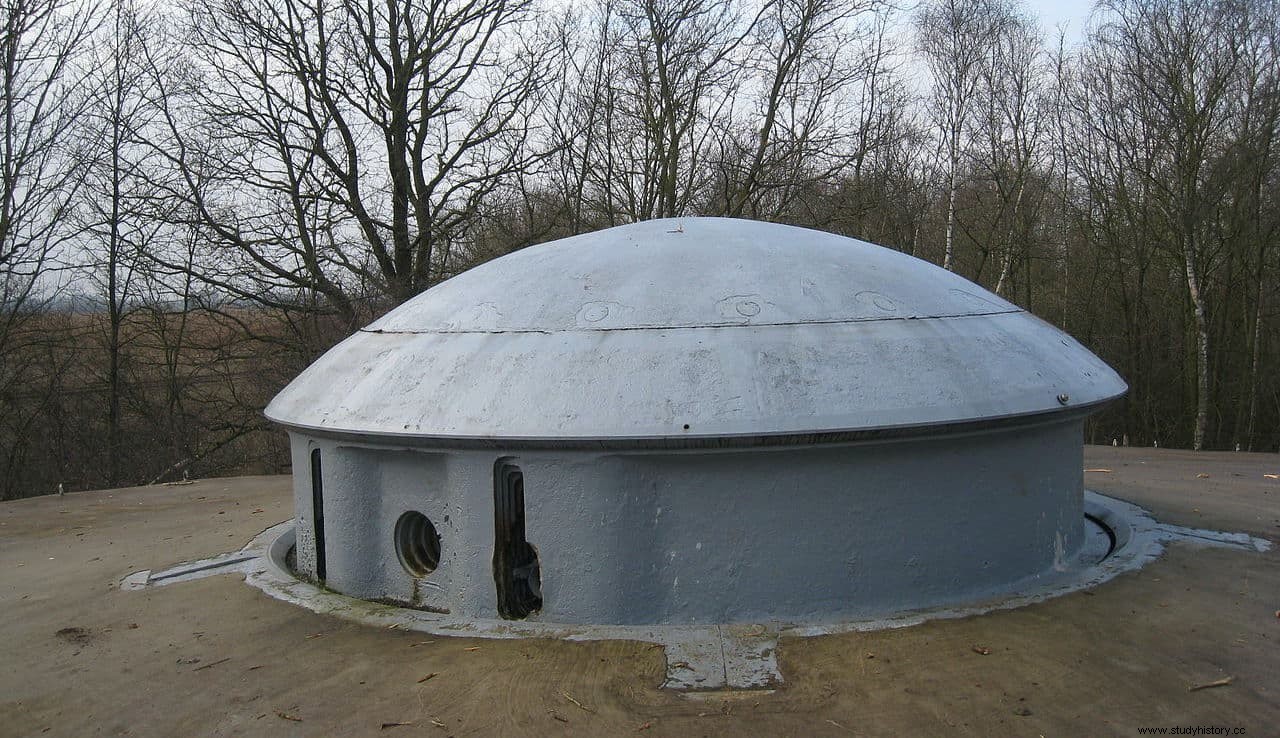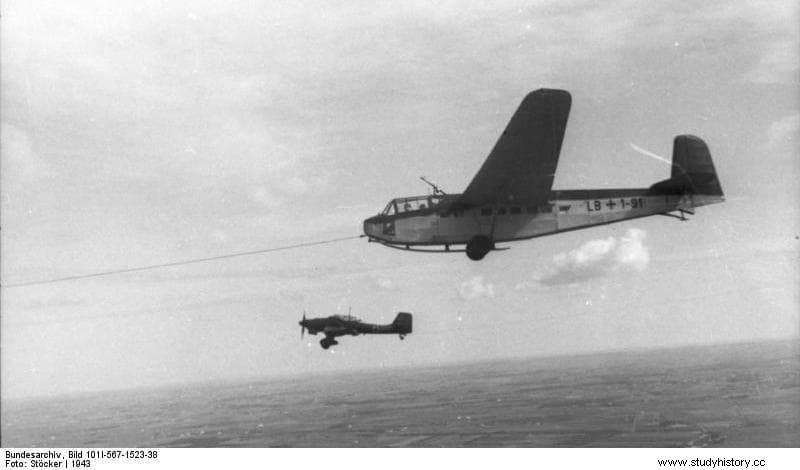Belgium's role in World War II was not particularly brilliant. Relying on a policy of neutrality, its army was outdated and poorly equipped, so when it finally mobilized under international pressure it could only hold out against the Wehrmacht for eighteen days before capitulating. Even what was considered the main defensive bastion, Fort d’Ében-Émael did not work. , designed and built precisely to stop an invasion, but taken over by German paratroopers after a carefully planned operation.

The Germans entered Belgian territory on May 20, 1940 as an intermediate step to attack France. It was called Fall Gelb (Yellow Plan), which aimed to also submit the Netherlands and Luxembourg. As we said, King Leopold III only had an antiquated army to oppose them, with hardly any tanks and less than two hundred planes, in which only the considerable number of troops stood out:almost six hundred and fifty thousand men, twenty percent of the population. masculine. There was little he could do in the face of the extraordinary German war machine.
Another example of this mentality was the confidence in the system of border fortifications built around the Albert Canal, near the city of Maastricht, following the fashion of previous decades that the French had also assumed with their Maginot Line and even the Teutons with the Siegfried Line.
The canal was a river branch 127 kilometers long and 3.4 deep, recently inaugurated, in the summer of 1939, to connect Liège with Antwerp. The 56-meter drop between the two was bridged by half a dozen locks that made it possible to sail the journey in seven days.

Paradoxically built by a German company, it should also serve as the first defense, not only for Belgium but also for the north of France, since at that point Hitler's intentions were already clear. And it is that the so-called Position Fortifiée de Liège I was built along the canal. , formed by four forts; from north to south:the aforementioned Eben-Mael, Fort d'Aubin-Neufchâteau, Fort de Battice and Fort de Tancrémont. The second and the fourth were smaller but both were the result of an extension of twelve original fortresses designed by General Henri Alexis Brialmont in the 19th century.
Fort d'Ében-Émael was the largest of the group. Also the driest and best drained, being located under Mount Saint-Pierre, a small calcareous orographic elevation (120 meters) on the west bank that separates the valleys of the Meuse and the Geer, and some of whose steep slopes provided an extra to the defense of the site.
Construction began in 1931, taking the aforementioned Maginot Line as inspiration, to bridge the so-called Limburg gap, through which the German army had penetrated during the First World War following Moltke's modification of the Schlieffen Plan.

It was completed in 1935. It had an irregular pentagonal plan covering about 750 square meters -although a second section extended as much-, somewhat reminiscent of the old Vauban fortifications of previous centuries. However, most of these structures were underground, with a four kilometer network of tunnels - equipped with anti-gas ventilation - that connected the combat posts with other facilities:barracks, ammunition depots, power plants...
The only thing that emerged was a huge reinforced concrete roof, a meter and a half thick, which was peculiar, since it was completely flat to the point that today it is used to house a grove and a wheat field, but which was then used by the soldiers to play soccer games. (That is why mines were not placed, a very serious error as we will see later). On it were supported the domes and casemates of steel and concrete that housed the artillery, the machine gun blocks and several trenches and anti-tank ditches.

About 1,200 soldiers were posted to Eben-Emael under Major Jottrand; Of these, a thousand were artillerymen divided into two groups (one on guard duty, the other quartered in a nearby town) that were relieved every week. Their level was not good, since they were basically reservists mobilized on the fly, after the German invasion of Poland. The remaining 200 were various technicians (maintenance personnel, administrative staff, health workers, cooks, etc.).
Still, the fort seemed fearsome at first. It had four retractable casemates and sixty-four pillboxes housing six 120mm guns, sixteen 75mm guns, twelve 60mm anti-tank guns, twenty-five machine guns, and several anti-aircraft guns accompanied by fifteen searchlights. The range of this artillery was between 11 and 17.5 kilometers; Larger caliber pieces were not installed because the neutrality that Belgium presumed imposed that the Germanic territory was out of range of any shot. Another mistake.

The Wehrmacht had conceived the plan to avoid the French Maginot Line by entering through Belgian territory and turning south, so that the BEF (British Expeditionary Force) and the French troops that supported it would be isolated from the rest of the country and from the Belgians, whose plans were to retreat towards them across three bridges. It was therefore vital for the Germans to seize these bridges, defended only by machine-gunned blockhouses served by a single infantry division (with a brigade on each bridge) with artillery support from Fort d'Ében-Émael.
Therefore, it was decided to entrust the mission to the Sturmabteilung Koch (Assault Detachment Koch, named for its commander, Walter Koch), made up of members of the 7th Airborne Division and the 22nd Airborne Division. The first (three parachute and one infantry regiments) was to take bridges, canals and the Waalhaven airfield, near Rotterdam, while the second (two infantry and one parachute regiments) had the objective of capturing the airfields around La Beech (Valkenburg, Ockenburg and Ypenburg).

Members of both were chosen to storm the fort, almost all fallschirmjäger (paratroopers) plus some Luftwaffe pilots, but it was considered that launching normally would spread the troops and slow down the pace, so a very silent glider landing was chosen; Hitler himself is said to have been enthusiastic about it, advised by his personal pilot.
Finally, eighty-five men were chosen for the mission, for which they carried out specific training (a scale replica of the Belgian facilities was built) and secret.
Once ready, the entire attack force, divided into four groups (baptized Granite, Steel, Iron and Concrete ), embarked on fifty gliders and on May 10, 1940 landed on the area of operations, each group in the site assigned for its respective mission. They went into combat immediately, when their arrival was discovered, but even so the surprise (there was no previous declaration of war) helped them to succeed; they suffered 22 dead, 26 wounded and one prisoner.

Meanwhile, the eleven gliders of the Granite group , the one who was to take Eben-Emael under the command of Lieutenant Rudolf Witzig, landed on the roof of the fortress, which was to be conquered in no more than an hour. The paratroopers began using shaped charges - a new weapon - to blast the turrets of the guns that could destroy the bridges and slow the German advance, while using flamethrowers against the machine gun posts. Everything went well except for the blasting of the larger caliber pieces, which needed more time and the help of a bombardment by Stukas .
The spectacle must have been curious, with the Germans running from one side to the other on that great smooth surface, now detonating explosives, now taking cover from their own planes, while the defenders resisted behind the thick walls longer than expected; neither one could enter nor the other leave. All the artillery was already dismantled when the Belgians sent forces to the place to counterattack. But it was useless, since, ironically, they had managed to destroy one of the bridges... which did not prevent the Germans from using the rest and, on the other hand, did hinder the arrival of help. Therefore, they were repelled.

That counterattack could not count on the help of the defenders of the fort, since the paratroopers had destroyed the doors leaving them locked up. The fallschirmjäger they kept them that way until dawn, when relief arrived with reinforcements; he managed, five hours later, to force the surrender of the position.
The Belgians suffered sixty dead and forty wounded, to the six dead and nineteen wounded Germans. All the surviving paratroopers were personally decorated by Hitler, some with the Iron Cross, like Witzig.
The other forts also fell:Aubin-Neufchâteau, on May 20, after running out of ammunition; Battice two days later, on the 22nd; and Tancrémont resisted until the 29th, when the Belgian government capitulated. The battle thus ended with Teutonic success, allowing the Wehrmacht to enter Belgium without further hindrance.
